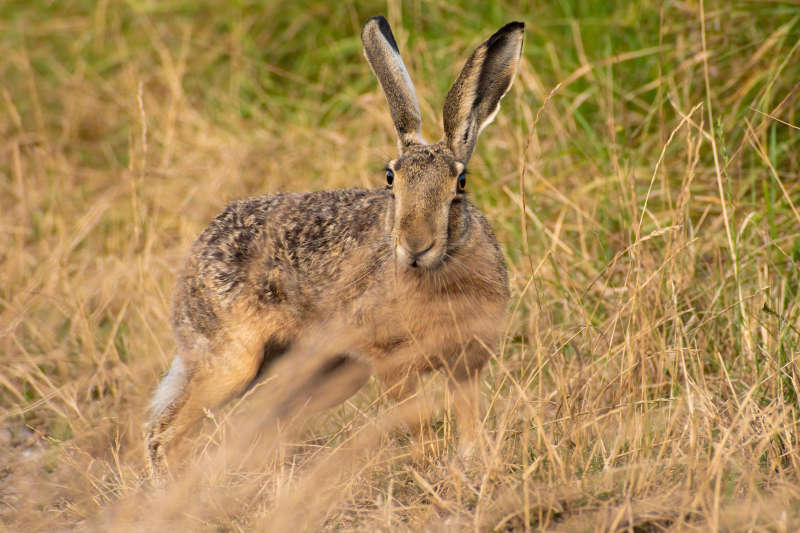Jackrabbit
The jackrabbit, a large and iconic hare of North and Central America, belongs to the genus Lepus. Renowned for its distinctive long ears and powerful hind legs, the jackrabbit is not only a symbol of the American West but also an intriguing species with remarkable adaptations for survival in arid environments.
Named for its prominent ears that can measure up to six inches in length, the jackrabbit's unique physical features serve various functional purposes. The large ears play a crucial role in thermoregulation, helping dissipate excess body heat in the hot desert climates where many jackrabbits reside. Additionally, these keen ears are instrumental in detecting predators, allowing the jackrabbit to react swiftly to potential threats.
The jackrabbit's fur varies in color, providing effective camouflage in different habitats. Typically, their coat ranges from a sandy or reddish-brown to a grizzled gray. This adaptive coloration, combined with their agility and speed, makes jackrabbits well-suited for survival in diverse environments, from open grasslands to deserts and scrublands.
One of the most distinctive features of the jackrabbit is its powerful hind legs, built for remarkable bursts of speed and impressive leaps. These adaptations aid in evading predators, with jackrabbits capable of reaching speeds of up to 40 miles per hour and covering distances of over 10 feet in a single leap. Such agility is crucial for their survival, allowing them to navigate through varied terrains while escaping from potential threats.
Jackrabbits are primarily herbivores, feeding on a diet of grasses, shrubs, and other vegetation. Their efficient digestive systems allow them to extract nutrients from tough, fibrous plant materials, contributing to their ability to thrive in arid and semi-arid regions where water sources may be limited.
The reproductive strategy of jackrabbits is characterized by high fecundity. Females, known as does, can produce several litters of one to six leverets (young hares) each year. This reproductive strategy is an adaptation to the high predation rates that jackrabbits face in the wild.
Leverets are born fully furred with open eyes, ready to fend for themselves shortly after birth. While the term "jackrabbit" is often used generically, there are several species of hares in North America that are referred to as jackrabbits, including the black-tailed jackrabbit (Lepus californicus), white-tailed jackrabbit (Lepus townsendii), and others.
















